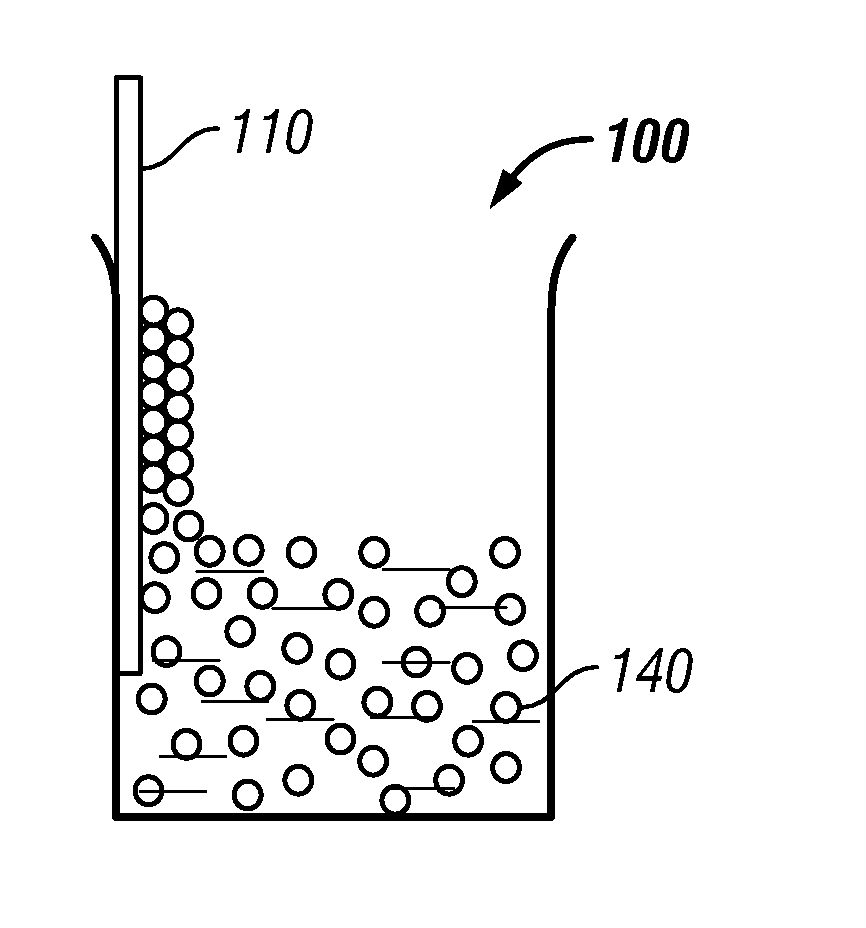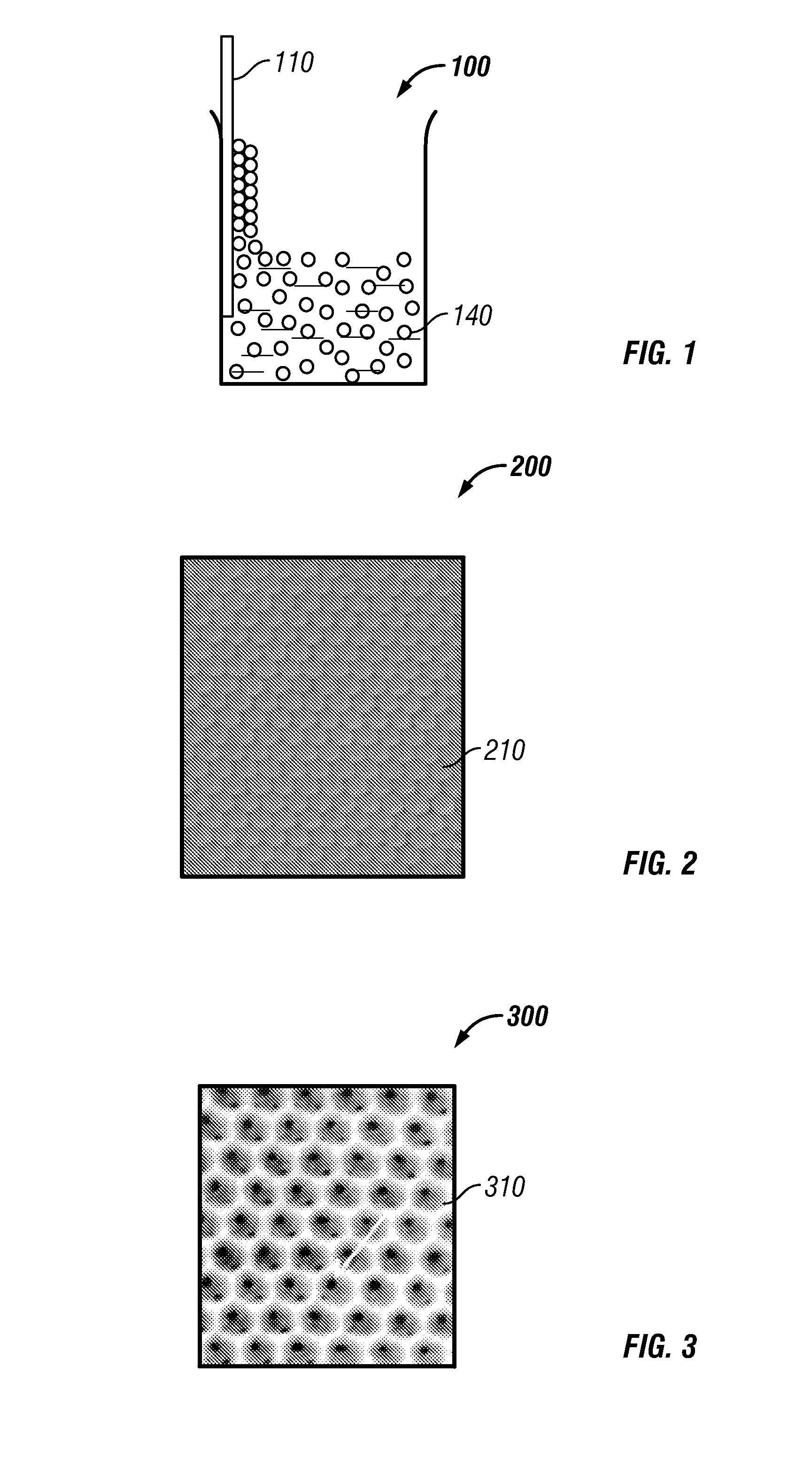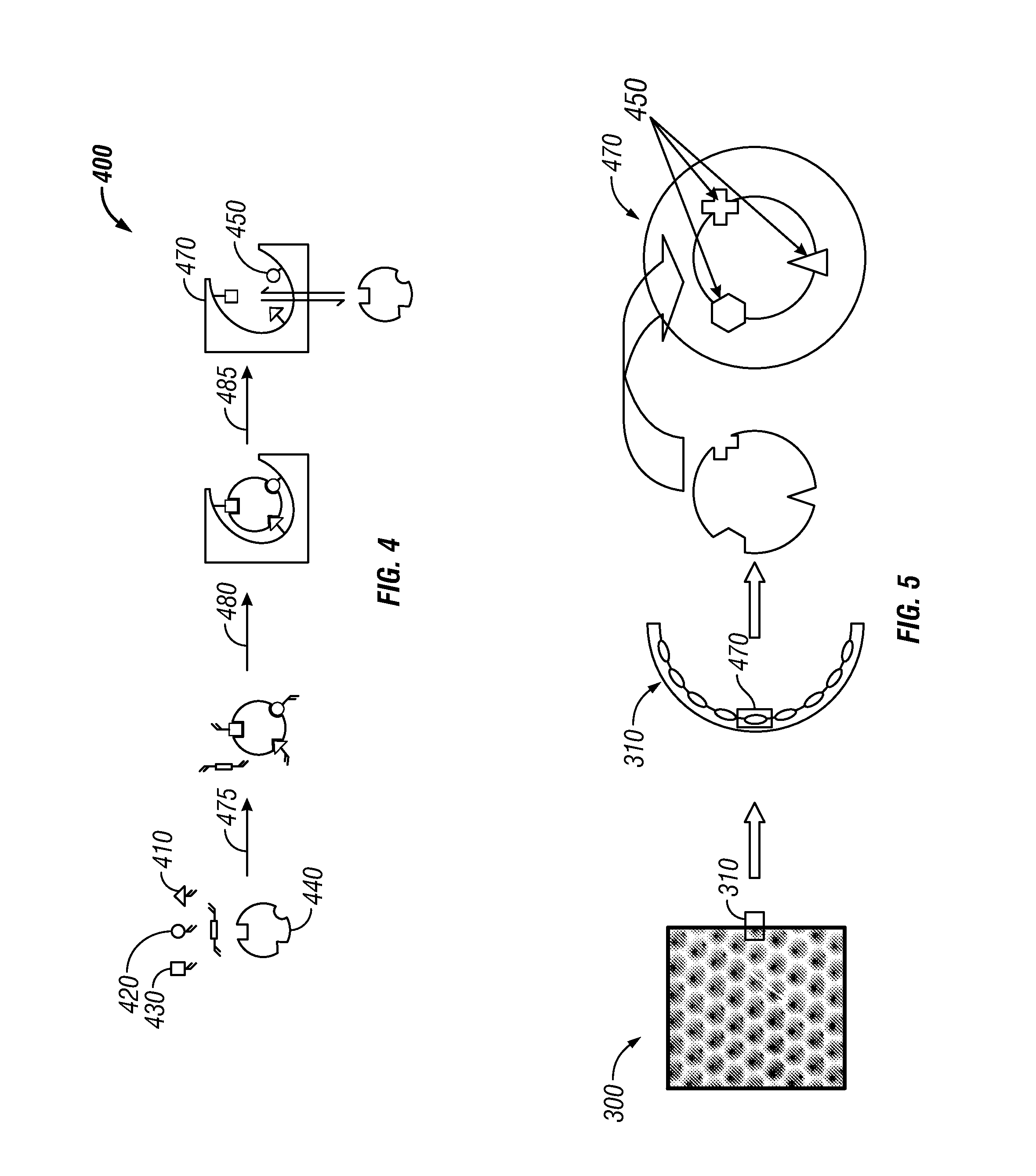Molecular imprinted three-dimensionally ordered macroporous sensor and method of forming the same
a three-dimensional order, microporous sensor technology, applied in the field of sensors, can solve the problems of large and cumbersome equipment, difficult cleaning, high cost and slow approach, etc., and achieve the effects of enhancing sensitivity and response speed, reducing flow resistance, and increasing specific surface area
- Summary
- Abstract
- Description
- Claims
- Application Information
AI Technical Summary
Benefits of technology
Problems solved by technology
Method used
Image
Examples
Embodiment Construction
[0021]The particular values and configurations discussed in these non-limiting examples can be varied and are cited merely to illustrate at least one embodiment and are not intended to limit the scope thereof.
[0022]The disclosed embodiments may be employed to form a macroporous structure and, preferably, a molecular imprinted three-dimensionally ordered macroporous (MiTOM) structure, of many compositions. The approach described herein utilizes the technique of molecular imprinting, which provides significant advantages over currently available molecular imprinting technologies. Molecules may be detected, captured, isolated, analyzed, and / or quantified according to the disclosed embodiments and utilizing a molecular imprinting process.
[0023]FIG. 1 illustrates a side view of a vertical deposition structure 100 that includes polystyrene spheres 140, in accordance with the disclosed embodiments. FIG. 2 illustrates a side view of a target template 200 (e.g., a direct opal film) that incl...
PUM
| Property | Measurement | Unit |
|---|---|---|
| organic | aaaaa | aaaaa |
| three-dimensional structure | aaaaa | aaaaa |
| concentration | aaaaa | aaaaa |
Abstract
Description
Claims
Application Information
 Login to View More
Login to View More - R&D
- Intellectual Property
- Life Sciences
- Materials
- Tech Scout
- Unparalleled Data Quality
- Higher Quality Content
- 60% Fewer Hallucinations
Browse by: Latest US Patents, China's latest patents, Technical Efficacy Thesaurus, Application Domain, Technology Topic, Popular Technical Reports.
© 2025 PatSnap. All rights reserved.Legal|Privacy policy|Modern Slavery Act Transparency Statement|Sitemap|About US| Contact US: help@patsnap.com



